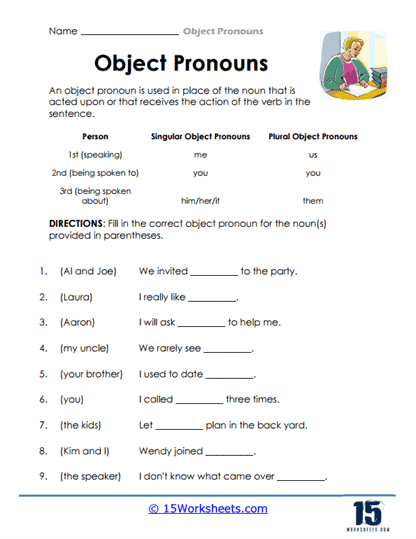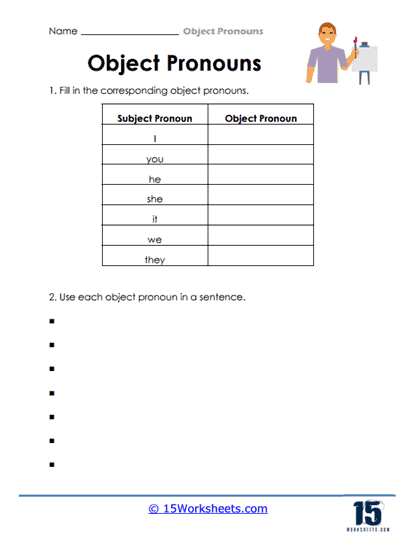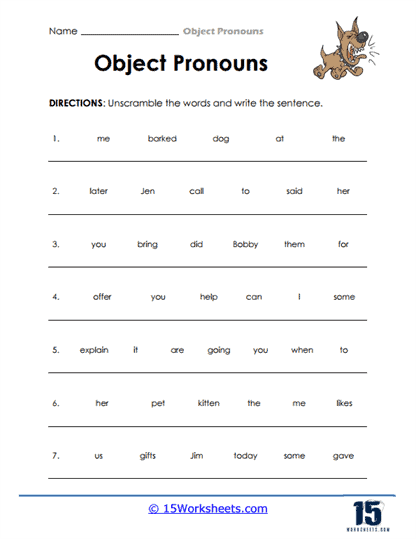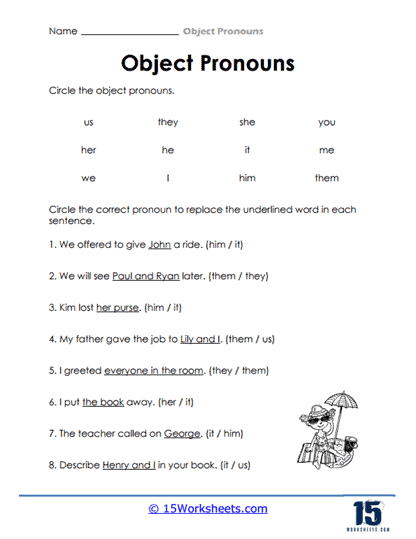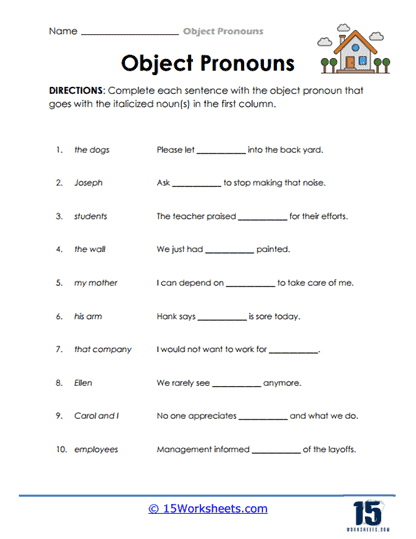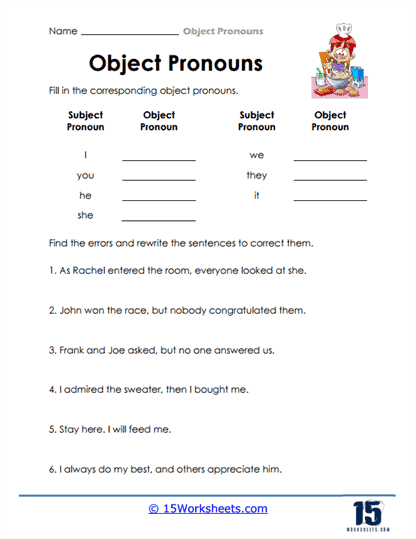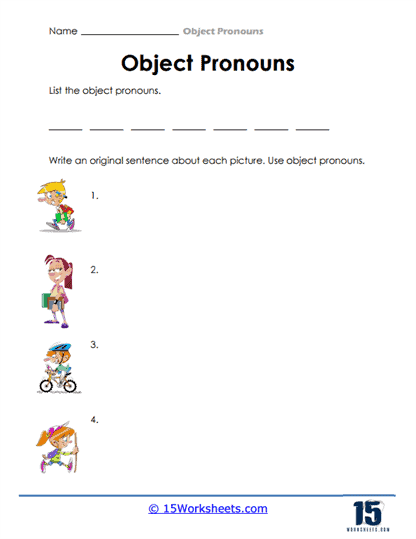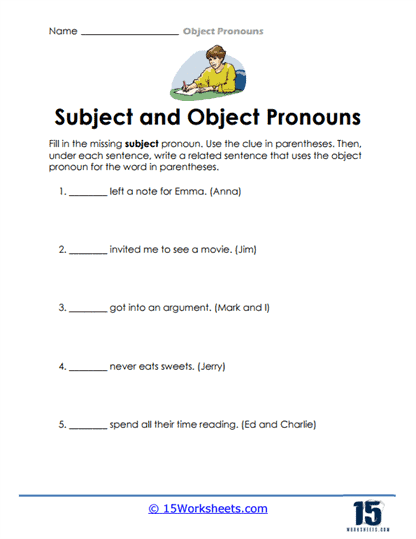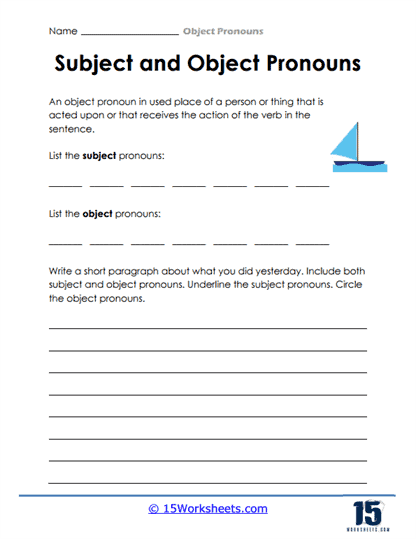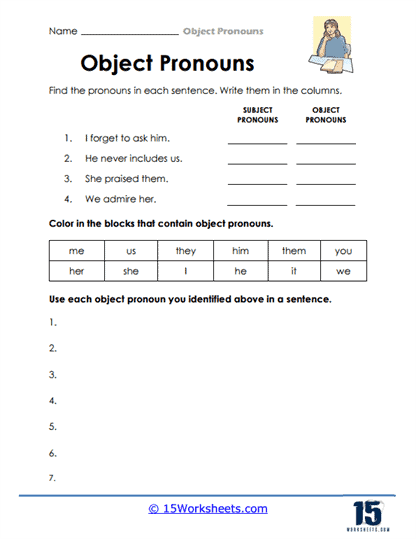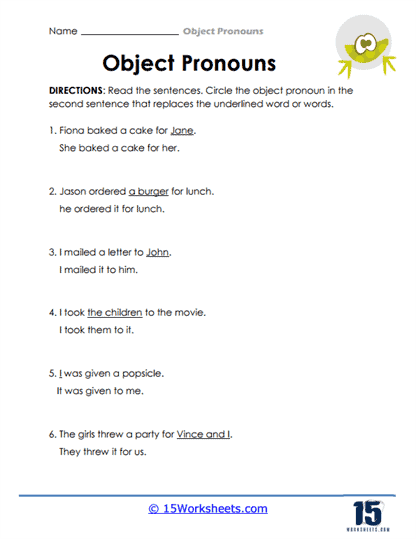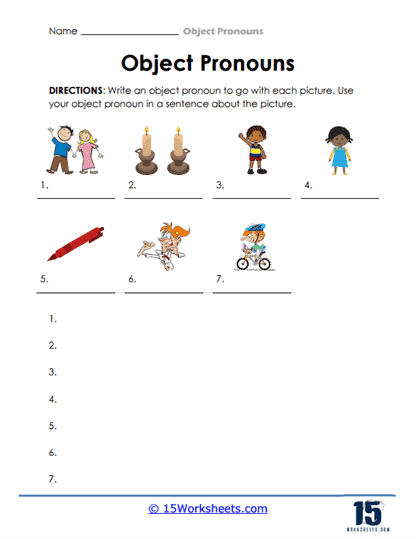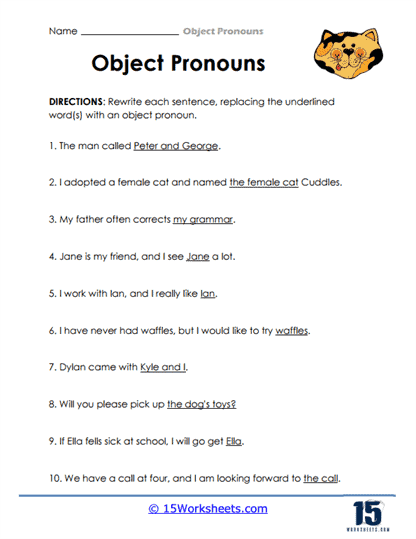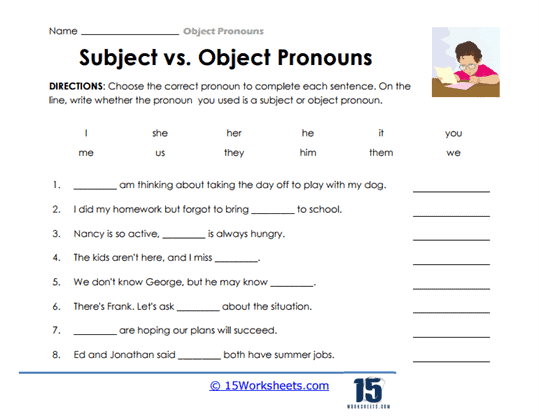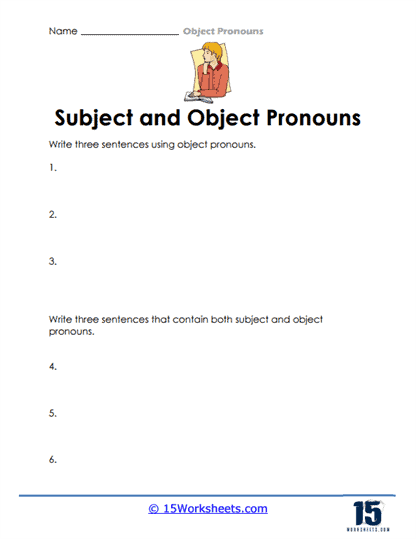Object Pronouns Worksheets
All About These 15 Worksheets
This collection of object pronouns worksheets is specifically designed to guide students through the learning and practice of object pronouns in English, providing them with the necessary tools to master this essential aspect of grammar. Object pronouns, which serve as the object of a verb or preposition, are fundamental in everyday communication. These pronouns replace nouns or noun phrases, making sentences more concise and fluid. As such, a solid understanding of how to use them correctly is critical for both written and spoken English.
The worksheets in this collection offer a diverse range of activities that are both engaging and educational. Students will encounter exercises such as fill-in-the-blank tasks, sentence rewrites, and original sentence creation, all designed to strengthen their grasp of object pronouns. Each worksheet is thoughtfully constructed to challenge students at varying levels, ensuring they can practice both the identification and the application of object pronouns in different contexts. Additionally, these worksheets often include clear explanations and illustrative examples, giving students a solid foundation in the rules governing object pronoun usage. The emphasis on varied exercises ensures that students not only memorize the rules but also understand how to apply them in real-life situations, improving their practical communication skills.
By working through these exercises, students will significantly enhance their ability to identify and use object pronouns accurately in both written and spoken English. Mastering object pronouns is not just about following grammatical rules; it’s about achieving clarity and precision in communication. In everyday conversation and writing, object pronouns are frequently employed, making them indispensable tools for clear expression. For instance, using pronouns such as “him,” “her,” or “them” in place of repetitive noun phrases can simplify sentence structure, making speech or text more efficient and easier to understand. Through consistent practice, students will develop a natural proficiency in using object pronouns, allowing them to communicate with greater confidence and fluency.
One of the key outcomes of completing these worksheets is that students will be able to seamlessly identify which object pronouns correspond to specific nouns. This ability is crucial for improving sentence variety and avoiding redundancy in communication. Additionally, students will be encouraged to craft their own sentences using object pronouns, reinforcing their understanding of how these pronouns function within a sentence. This process not only builds their grammar skills but also fosters creativity and independent thinking as they apply the rules to their own ideas. Moreover, by comparing subject pronouns and object pronouns within the exercises, students will gain a clearer understanding of the differences between these two types of pronouns and how they interact in sentence structure. This deeper comprehension is vital for constructing grammatically sound and meaningful sentences.
What are Object Pronouns?
Object pronouns play a fundamental role in English grammar, serving as a key component in constructing sentences that are both clear and efficient. These pronouns specifically replace nouns that function as the object of a verb or a preposition, simplifying sentence structure and avoiding unnecessary repetition. By using object pronouns, we streamline our language, making communication smoother and easier to follow, whether in writing or speaking.
An object pronoun typically comes after the verb or preposition in a sentence, as it takes on the role of receiving the action. For instance, in the sentence “He gave the book to me,” the word “me” is the object pronoun, replacing a more specific noun and making the sentence less cumbersome. Without the use of an object pronoun, we might be forced to repeat names or objects, leading to awkward or overly repetitive statements. Thus, object pronouns are not only grammatically essential but also contribute to the flow and clarity of language.
In English, the main object pronouns include me, you, him, her, it, us, and them. Each of these pronouns functions to replace a noun that is receiving the action of a verb or acting as the object of a preposition. For example, “me” is used when referring to oneself as the object: “He gave the book to me.” “You” is used in sentences where the person being addressed is the object: “I’m talking to you.” Similarly, we use “him” or “her” when referring to someone else: “I saw him at the park,” or “She handed the keys to her.” The pronoun “it” is often used when referring to objects or animals: “I found it under the bed.” When speaking about groups of people, “us” and “them” come into play: “They invited us to the party” or “I sent the package to them.”
What makes object pronouns so valuable is their ability to avoid repetitive or redundant phrases. Take, for instance, the sentence “John gave the book to John.” While grammatically correct, the sentence feels awkward due to the repeated use of “John.” By replacing the second instance of “John” with “him,” the sentence becomes “John gave the book to him,” which reads much more naturally. This simple substitution of an object pronoun enhances the flow of the sentence and eliminates unnecessary repetition, making the communication clearer and easier to follow.
Object pronouns are versatile and used frequently in both formal and informal contexts. Whether you are writing an academic paper, drafting a business email, or having a casual conversation with friends, object pronouns help convey meaning succinctly. This ability to condense sentences without sacrificing meaning is a powerful tool for anyone looking to improve their language skills. Moreover, the use of pronouns is deeply embedded in everyday communication, so mastering their use ensures that your speech and writing will be polished, professional, and easy to understand.

